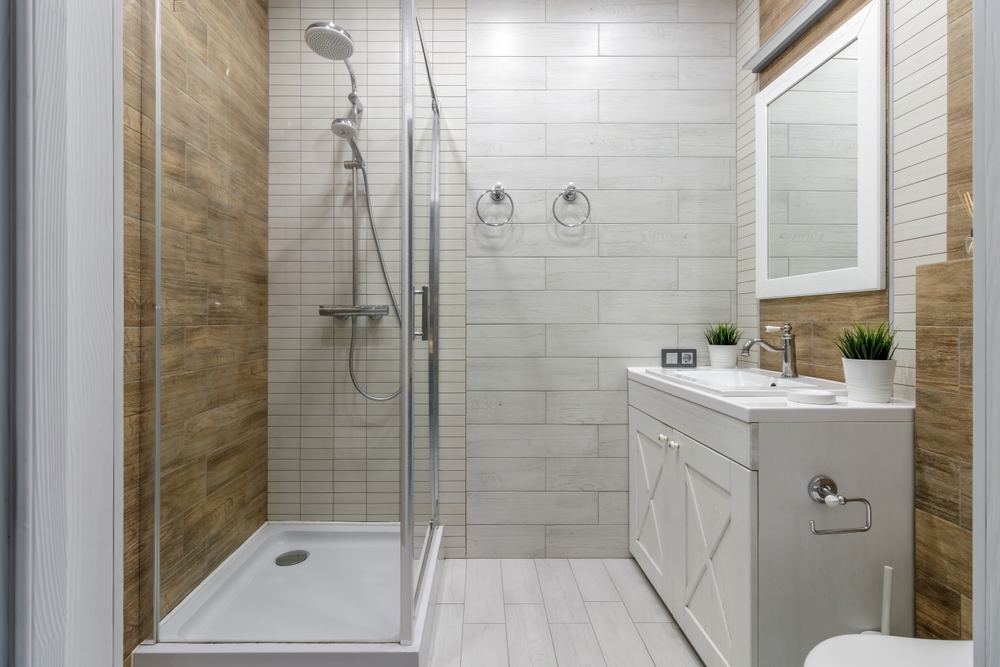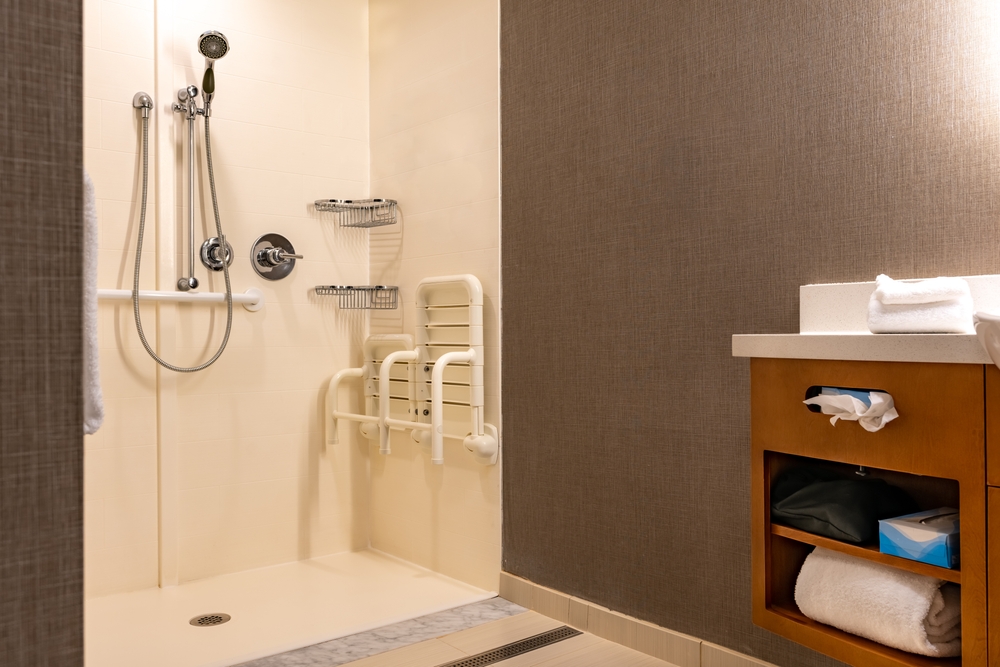
The height of your shower mixer is a key consideration in any bathroom or wetroom layout.
Whether you’ve chosen a completely new wetroom design or you’re upgrading your current bathroom, paying close attention to the shower area will help you create a comfortable and accessible space.
But what is the perfect height for a shower mixer and why does it matter? Let’s find out.
What is the Standard Height of a Shower Mixer?
Few things are more invigorating than a refreshing shower. Whether you’re awakening the senses with a brisk morning blast, or enjoying a soothing cleanse at the end of the day, a well-designed shower should be a major focus of any bathroom or wetroom layout.
But the height of a shower mixer can make or break any shower experience, especially when you’re hunching over to reach the water jet or straining to reach the taps and fixtures.
So, whether your shower is part of new wetroom design, you have a separate shower enclosure or a shower unit installed above the bath, your shower mixer should be high enough so that:
- You can stand comfortably underneath the shower mixer without hunching or stooping
- Your shower taps, fixtures and other fittings are within easy reach
- Not so high that the spray hits the opposite wall of your shower space
The rules are slightly different for rainfall showers, which are usually fitted above the user in line with the ceiling, providing a cascade of continuous water.
But for most other showers, including doorless walk-in showers, the following height measurements are recommended when creating a relaxing and practical shower space:

Shower Head Height
Shower head heights are not included in UK building regulations. However, the recommended standard shower head height is 200cm or 6.67 feet from the standing surface, floor or shower tray. This allows the water spray to fall directly onto the head and upper body of users of average height.
Taller people may need to adjust the position of the shower head to suit their height. Typically, this should be at least one foot above your head.
Shower Tray Height
Shower trays come in various depths according to your bathroom or wetroom setup. Shower tray depths typically range from 50mm up to 90mm, or around 2 to 4 inches depending on your preferences and the drainage system.
It’s important to choose the right shower tray height so the shower trap functions properly — helping to ‘trap’ hair, dirt and debris before it washes down the shower drain, clogging up your bathroom pipes. Not only that, but the position of a shower tray should be proportionate to the height of your shower head to provide the best possible shower experience.
Height of the Shower Mixer Controls
Whether you’re creating your dream wetroom or designing a Jack and Jill ensuite, installing your shower mixer taps and temperature controls at the correct height is essential for an enjoyable shower. It will prevent you from slipping over while you’re stretching or reaching for the taps and offers comfortable access for all users.
Again, building regulations do not mandate a specific height for shower mixer taps. However, typical measurements are 48 inches or 4 feet from the shower or wetroom floor to the centre of the taps. This ensures the water controls are within easy reach when you’re showering and means your water pipes and plumbing are kept safely out of the way.
Shower Curtain Height
The height of your shower curtain should allow for ample headroom and prevent water splashing onto the floor. For stall showers, the curtain should be mounted along the edge of the ceiling wall and hang down to contain the water flow.
Common height measurements between the shower floor and curtain rods are at least 200cm or 6.67 feet to match the height of the shower head. Some shower curtain hangers are also adjustable, allowing them to drop when the height of a ceiling changes
What Should the Height of a Shower Mixer be in a Disabled Shower Room?
There are specific shower mixer height requirements when installing an accessible disabled shower room. In the UK, the government-approved Building Regulations Document M sets out important accessibility guidelines specifically designed for wheelchair users or people with limited mobility.
While Doc M doesn’t specify precise shower head height measurements, it does recommend that fixed shower heads should be positioned between 1,700mm and 2,100mm above the shower floor, with the mixer controls installed at a height of between 750mm and 1,000mm.

Does the Height of a Shower Mixer Affect Water Pressure?
Yes, the height of your shower mixer can significantly impact water pressure bceause of gravity and the distance the water must travel. For instance, in gravity-fed systems, the pressure is mostly determined by the difference in height between the water tank and the shower head. In this case, the greater the drop, the higher the water pressure will be.
Therefore, installing a mixer too high in relation to the water source can reduce the flow rate and ruin your shower experience. On the other hand, if the mixer’s too low it may not provide enough clearance or won’t function properly with the other plumbing fixtures.
When installing a shower mixer at the correct height will deliver optimal water pressure and consistent temperature whenever you take a shower. If you’re experiencing problems with your water pressure, you could also improve the flow rate by installing a modern shower pump.
Is the Height of a Shower Mixer the Same for Outdoor Showers?
That depends. Because there are additional factors to consider for outdoor wetrooms and bathrooms. One of the most important things to bear in mind is that outdoor showers are often multi-purpose and need to accommodate a range of activities, whether it’s rinsing sand or chlorine off after a swim or washing the dog after a muddy walk.
As a result, the height of an outdoor shower mixer should be determined by ease of access and user comfort. That means installing the shower head and controls a little higher than normal to suit standing users and reduce the need for constant adjustments.
Need Help Creating Your Perfect Wetroom or Bathroom?
At CCL Wetrooms, we have over 30 years’ experience of designing and installing wetrooms and bathrooms for both residential and commercial projects. All our wetroom solutions are also backed by our unique lifetime guarantee, giving you added peace of mind. Contact us today to discuss your requirements.









